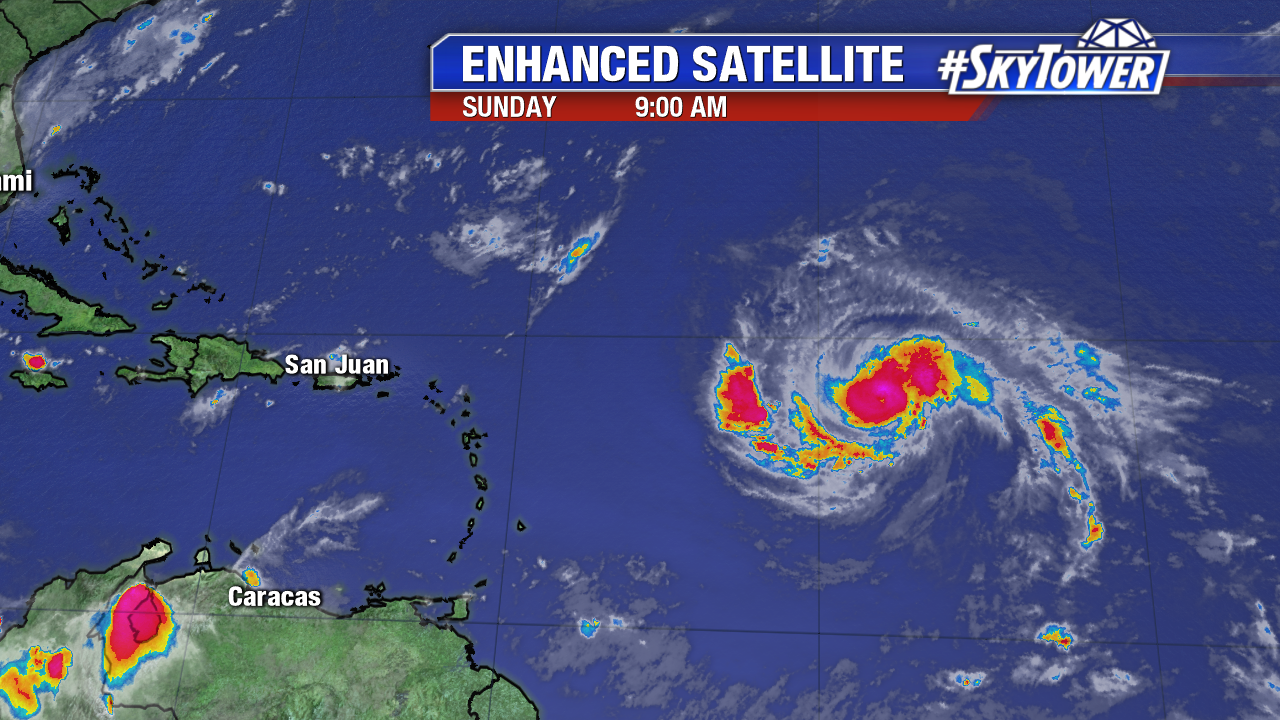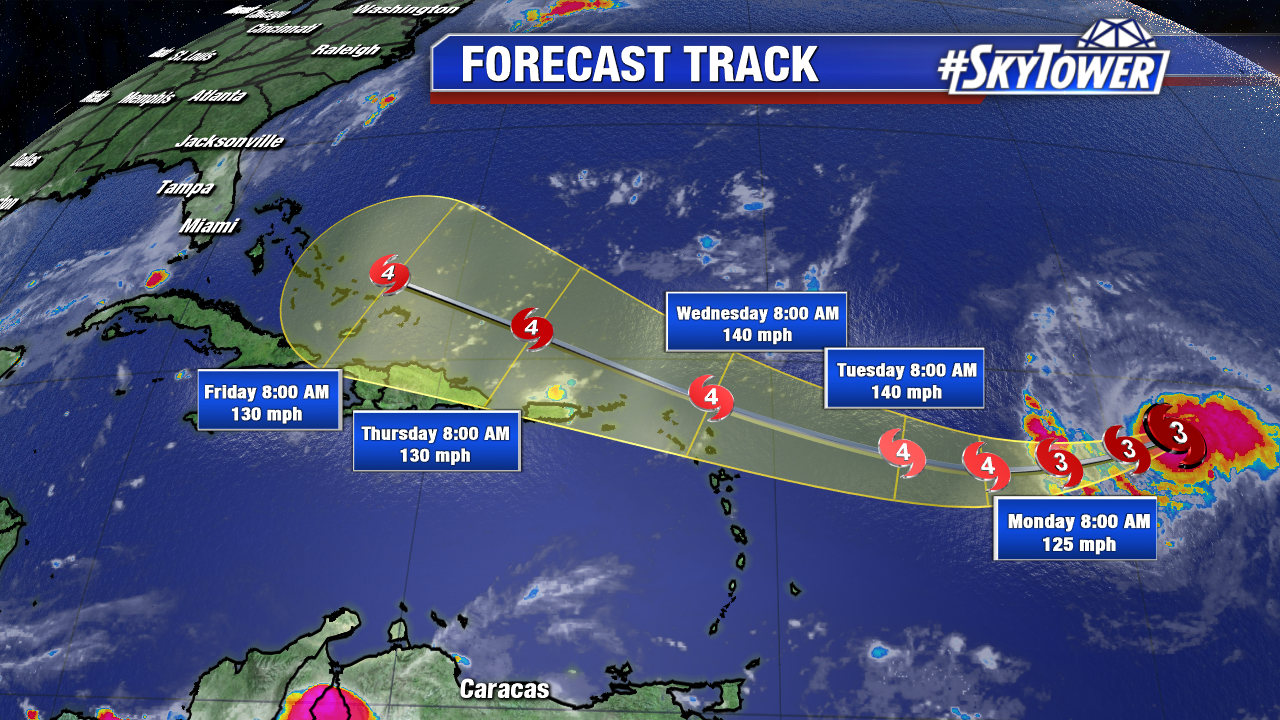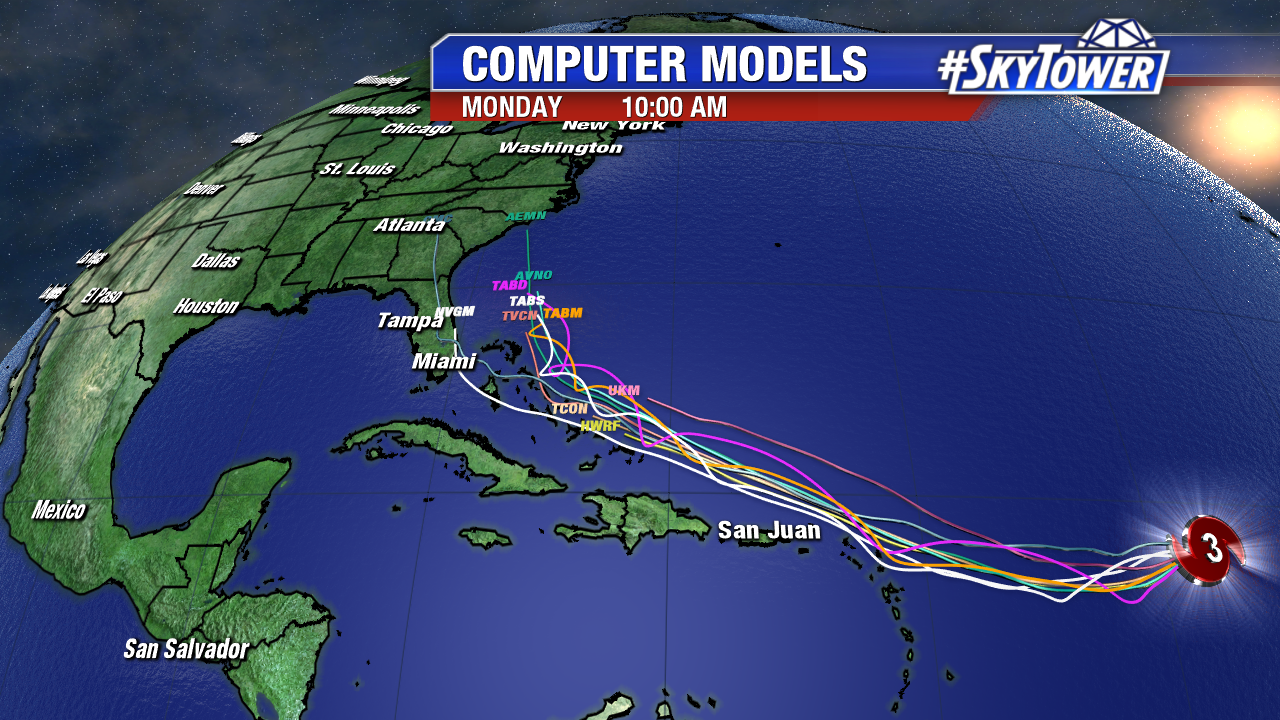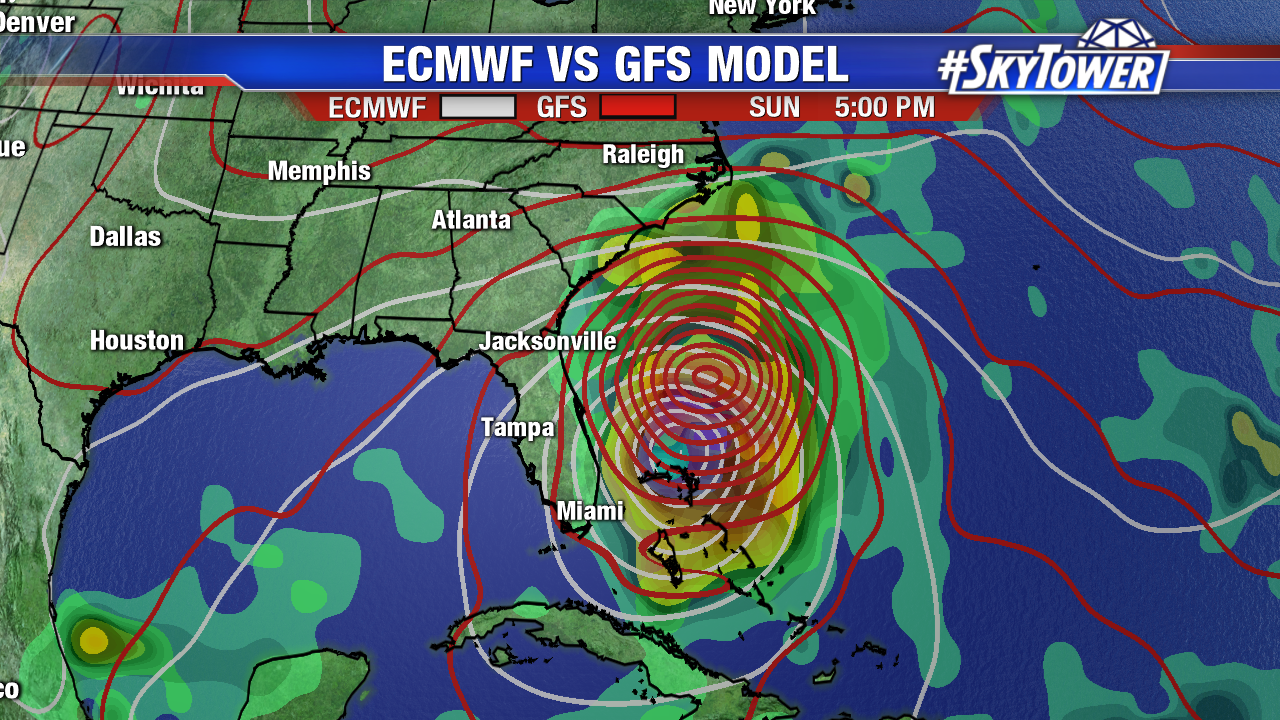Hurricane Irma regains major hurricane strengthens early Sunday as it closes off on drier air aloft. At 11 AM Sunday the eye has filled as yet another eyewall replacement cycle may be underway. Some fluctuations in strength may continue over the next day or two. Max sustained winds are at 115 mph at 11 AM. The jog west-southwest is underway at 14 mph. Irma is still less 900 miles for the Leeward Islands, but the official NHC forecast is nudged closer to this region by mid-week. This is in line with a slight westward shift in computer models early Sunday morning. While the core of hurricane force winds extend only 25 miles from the center, the tropical storm wind field expands slowly. The Leeward Islands need to prepare for possible category 4 hurricane conditions Wednesday. Hurricane/Tropical Storm Watches could be issued on Monday. The major hurricane will ride the perimeter of a strong Bermuda High. It takes a northwesterly track late Tuesday, Wednesday, Thursday and Friday near Puerto Rico, Hispaniola, Turks and Caicos, and the Bahamas. Beyond the next 5 days, powerful Irma threatens the East coast of the U.S., including Florida, by late next weekend and early next week. During this time the dangerous major hurricane will be much larger in size too.
Multiple hurricane reconnaissance aircraft with investigate Irma and its surrounding environment starting Sunday afternoon. This data will be ingested into computer models and help with better model consensus. This is key, especially planning ahead for possible U.S. impacts. By Tuesday or Wednesday we will have a better grasp on the long-range track. Now is the time to prepare.


Late Saturday computer models trended a bit further east, however that changed early Sunday. A trip out to sea is still a possibility, but numerous models show a major hurricane landfall somewhere on the East coast. A Gulf track is the least likely path at this time. While the majority of early Sunday computer models, Euro ensembles, GFS ensembles focus in on the Carolinas, there is a very large spread. Florida, the Carolinas and Mid Atlantic need to monitor the forecast closely. According to Dr. Klotzback from Colorado State University, the last hurricane landfall in the U.S. during the month of September is Jeanne in 2004.

It is not uncommon for models to flip flop their solutions 7+ out from a possible landfall. The Euro has been back and forth. It was out to sea Saturday, but back into the U.S. near the Carolinas late Monday/early Tuesday. Interestingly enough, the GFS has been very consistent this weekend with a major hurricane in this vicinity by next Monday September 11th. Don’t focus in on a specific model run, but watch trends. Better model data in the days ahead will help us gain clarity on Caribbean and U.S. impacts down the road. Stay tuned.

